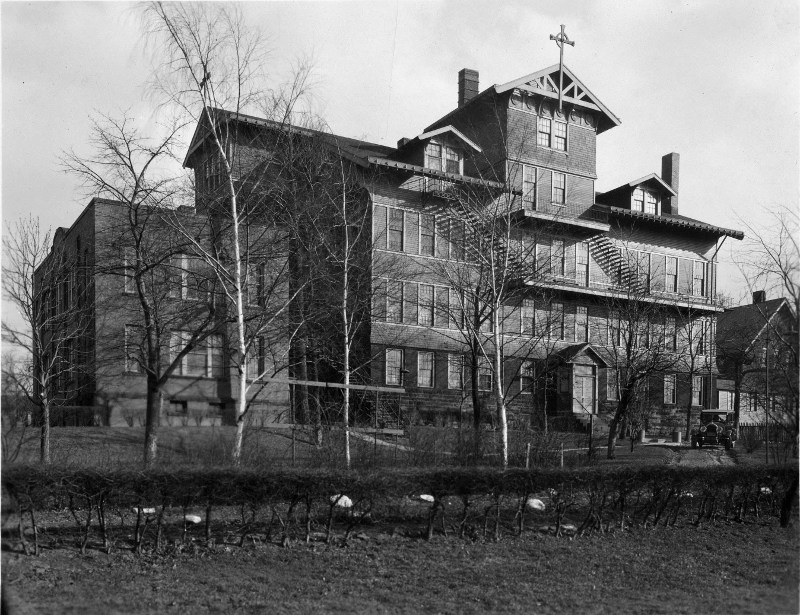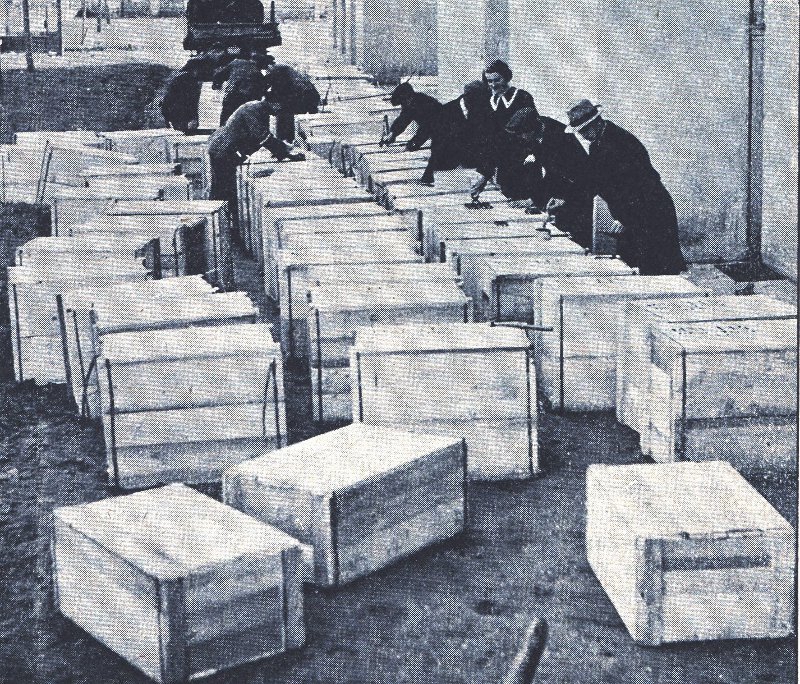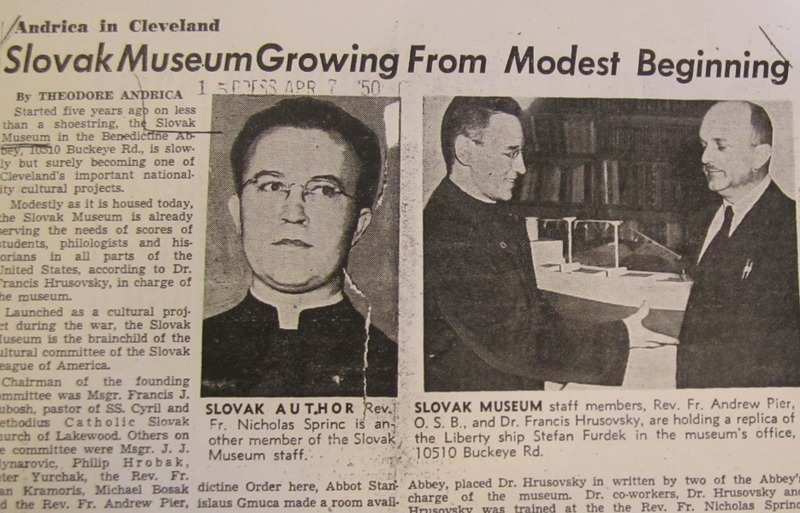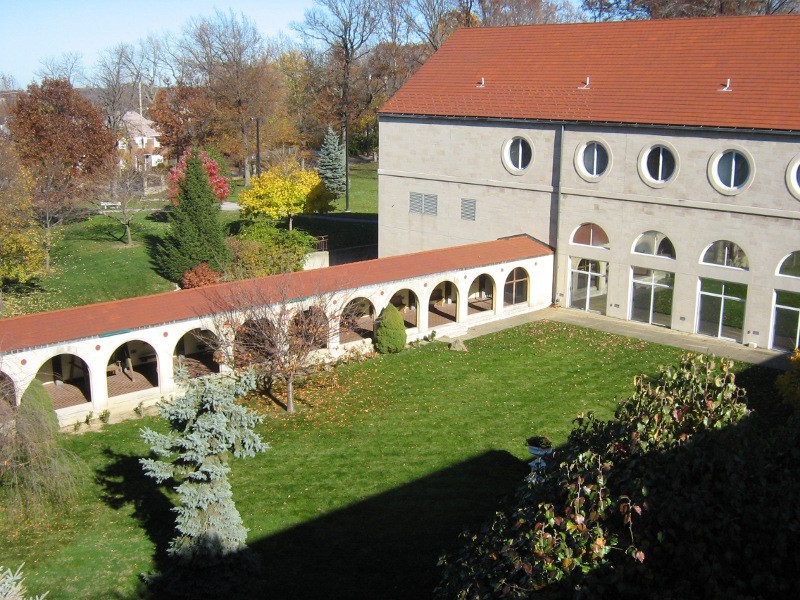The Slovak Institute
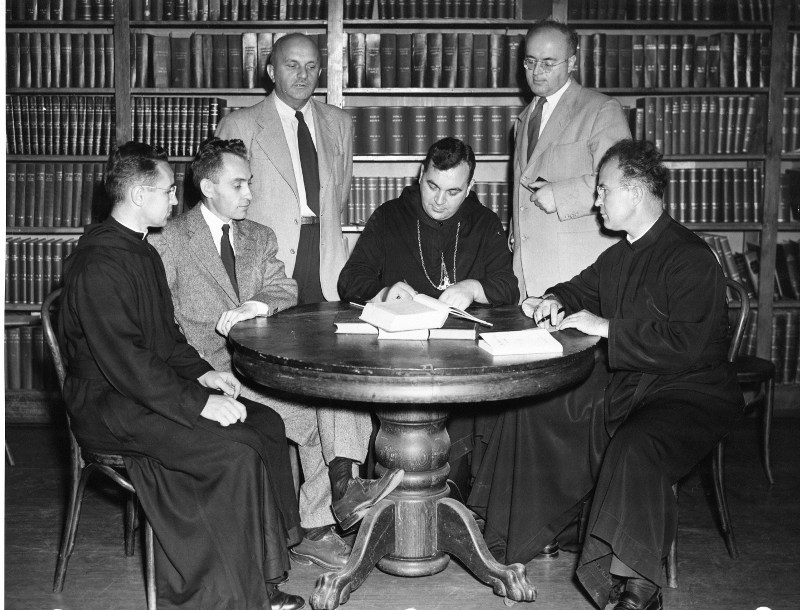
The Slovak Institute is a library, archive and museum of Slovak books, newspapers, journals, photographs, paintings and other Slovak cultural items at St. Andrew Svorad Abbey located at 10510 Buckeye Road, on the southeast side of Cleveland. Founded in 1952, the major part of the Institute's library had its genesis in an extraordinary trip that four Slovak intellectuals from Matica Slovenska (pronounced "Mah-teet'-sa Slow-ven'-ska")--the Slovak Institute of Arts and Sciences, made to Cleveland in 1936.
Arriving in Cleveland on April 16, 1936, the four intellectuals (an historian, a writer, an artist, and a film director) brought with them almost 3,000 books which had been published in Slovakia since 1918--the year in which the first Czechoslovak Republic had been created. Jozef Ciger Hronsky, the writer and president of the delegation, later wrote about the purpose of the group's trip that year to Cleveland, as well as to other American cities which had large Slovak populations. Bringing these books, he wrote, was in part to thank Slovak-Americans for their support of the Slovak independence cause in World War I which had led to the creation of the first Czechoslovak Republic. However, he added, there was a second purpose to the trip. Matica Slovenska, which is Slovakia's national cultural organization, was concerned that, by 1936, many Slovak-Americans were losing their cultural ties to their ancestral homeland. It was hoped that this gift of books would help to re-establish those cultural ties between Slovak-Americans and Slovakia.
The four delegates from Matica Slovenska spent almost a month in Cleveland, attending banquets in their honor, enjoying the Great Lakes Exposition and capping off their visit by participating in a May 10, 1936 ceremony at the site of the Milan Stefanik statue at Wade Park, commemorating the seventeenth anniversary of the death of this World War I national hero of Slovakia. After the delegates departed from Cleveland, most of the 3,000 books that had formed the centerpiece of their visit to Cleveland eventually ended up in the library at St. Andrew Svorad Abbey. This was a logical place for them. Not only had the Abbey been founded by a Benedictine Order of Slovak priests in 1922, but the Abbey's grounds had also been home since 1927 to Benedictine High School, the first Catholic Slovak boy's high school established in the United States.
Not without a small amount of irony, at the end of World War II and following the takeover of the Czechoslovak government by the Communist party, the 3,000 books at the Abbey became the centerpiece of a new mission. In 1943, during the War, the Slovak League of America had donated funds to St. Andrew Svorad Abbey for the purpose of creating a Slovak museum in Cleveland. Once the war ended, the museum became a gathering place for Slovak refugees fleeing from communism and communist control of Czechoslovakia. In 1952, Abbot Theodore Kojis converted the museum at the abbey into the Slovak Institute, citing the importance of having a Slovak cultural organization in the United States to serve in the stead of Matica Slovenska, which by 1952 was under the control of the communist party in Slovakia.
For the next nearly four decade period-- from 1952 to 1989, the Slovak Institute in Cleveland fulfilled the mission of serving as a Matica Slovenska abroad, conducting various Slovak cultural activities here in Cleveland that had international impact, including publishing and surreptitiously shipping back to Slovakia books authored by post-World War II Slovak refugees living in exile in the United States.
With the end of communist party control in Czechoslovakia in 1989 and following the creation of an independent democratic Slovak state in 1993, the main purpose of the Slovak Institute--to serve as a Matica Slovenska abroad, ceased to exist. Accordingly, since 1993, and especially during the tenure of the Institute's current director-- from 2002 to the present, the Institute has instead focused on achieving other cultural goals, including strengthening the cultural ties between Slovakia and Slovak-Americans--a goal that had sparked Matica Slovenska's trip to the United States, and to Cleveland, in 1936. In addition to pursuing this goal, the Slovak Institute also continues to this day to preserve and maintain its extensive library of Slovak books, journals and archival materials for the benefit of the Slovak-American community, scholars, and the interested general pubic.
Images

